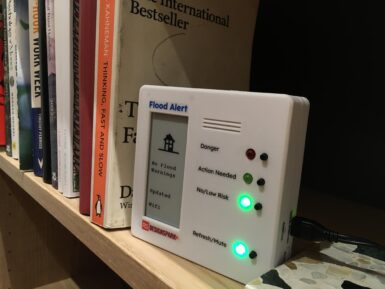
Gravity: 27 Pcs Sensor Set for Arduino
Sold outExcellent bundle with some of the most popular sensors: start measuring light, gas, sound, touch, distance and many other things!
Overview
- Relay Module V2
- Digital RED LED Light Module
- Digital White LED Light Module
- Digital Green LED Light Module
- Digital Blue LED Light Module
- Analog Grayscale Sensor
- LM35 Analog Linear Temperature Sensor
- Analog Ambient Light Sensor
- Digital Vibration Sensor
- Digital Tilt Sensor
- Digital Push Button
- Capacitive Touch Sensor
- Digital magnetic sensor
- Analog Sound Sensor
- Analog Carbon Monoxide Sensor (MQ7)
- Analog Voltage Divider
- Piezo Disk Vibration Sensor
- Analog Rotation Sensor V2
- Joystick Module
- Flame sensor
- Triple Axis Accelerometer MMA7361
- Digital Infrared motion sensor
- Sharp GP2Y0A21 Distance Sensor (10-80cm)(3.94-31.50")
- Soil Moisture Sensor
- Digital Push Button (Red)
- Digital Push Button (White)
- Steam Sensor
The wiki for these sensors and devices makes it easy to start learning. So save by purchasing them together and start experimenting now!
Get Inspired
An IoT Moisture sensor that sends moisture data from an Arduino Nano 33 IoT to the Arduino IoT Cloud

As climate change continues to worsen, events such as heavy rains, hurricanes, and atmospheric rivers have only intensified, and with them, large amounts of flooding that pose serious risks to life and property. Jude Pullen and Pete Milne, therefore, have responded by creating a "physical app" that can show the potential for flood dangers in real-time with sound, lights, and an ePaper display. The Arduino Nano 33 IoT powering the Flood Alert device sources its data from the UK Environmental Agency’s API to get statistics on an area’s latest risk level along with an extended description of what to expect. Initially, the electronics were mounted to a breadboard and housed within a cardboard enclosure, but a later revision moved everything to soldered protoboard, a 3D-printed case, and even added a piezoelectric buzzer to generate audible alerts. For now, the Flood Alert’s sole source of data is the aforementioned API, but Pullen hopes to expand his potential data sources to include “hyper-local” sensors that can all be aggregated and analyzed to give a much more precise view of flooding in a smaller area. To learn more about Flood Alert and its myriad applications to local communities and beyond, check out the original long read article’ is available at DesignSpark.








